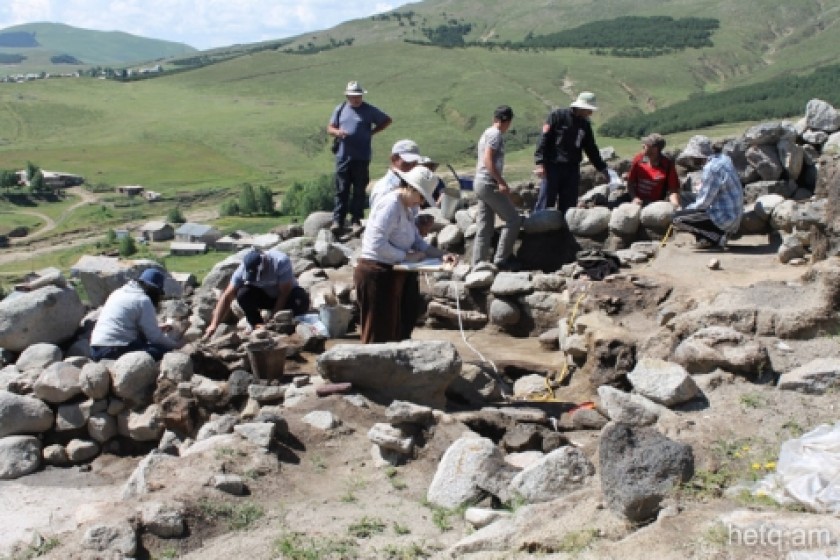
Excavating Armenia’s Bronze Age: Competition Fierce for Summer Jobs at Gegharot Archeological Dig
Emil Bayrakhtaryan is one of the lucky residents of Gegharot village in Armenia’s Aragatzotn Province to have gotten a summer job as a digger at a local archeological site.
Competition is fierce to get the jobs that pay 3,000 AMD (US$7.30) daily. The diggers work from 9am to 4pm.
Emil and his fellow workers confess that it was the money that first attracted them but soon realized they were involved in covering bits and pieces of history dating back several millennia.
Archeologicaldigs in the villages of Gegharot and Tzaghkahovit have been taking place since 1998 within the scope of the Armenian – American “Aragatz” project. Rouben Badalyan, an employee at Armenia’s Institute of Archeology, supervises the digs.

“There was a settlement on the top of this hill dating back to the early Bronze Age. The settlement was abandoned for some reason but people returned in the second millennium BCE. A cyclopean fortress was built atop the hill and a few holy shrines were constructed. There was anactive social life,” Badalyan said.
The team is focusing on the settlement, but they have already excavatedthe third burial mound none to twelve meters in diameter.
The artifacts they dig up are handed over to Armenia’s Museum of History.
Gegharot is located 2,060 meters above sea level, thus allowing for a mild chill even on the hottest of days. A sea of wild flowers stretches out like a blanket to the hill.

Archeologist Ermine Haroutyunyan has been working on the dig site since 2002.
She points to the square shaped areas that resemble rooms which date back to the 4thmillennia BCE.
Team leader Badalyan shows me a spot in the center of the rooms that looks like a burnt hearth.
 “It’s quite interesting; I’d say it even has a dramatic history. It was burnt several times but has stayed in the same spot as 4-5 thousand years ago. The structure’s roof and walls collapsed, so they covered it and here we are four thousand years later excavating it. The artifacts have remained unmoved,” Badalyan says.
“It’s quite interesting; I’d say it even has a dramatic history. It was burnt several times but has stayed in the same spot as 4-5 thousand years ago. The structure’s roof and walls collapsed, so they covered it and here we are four thousand years later excavating it. The artifacts have remained unmoved,” Badalyan says.
The site was also of strategic importance for copper was transported from Akhhtala and Alaverdi down to the Ararat Valley. From this hill they could monitor the metal trade.
There is still no archeological site in Armenia that has been fully excavated, according to Badalyan. Over sixteen years, the team has succeeded to study 3,000 square meters at the Gegharot site. Just the settlement without the burial mounds covers six hectares. Badalyan considers this an achievement but only an insignificant portion of the overall site.

“Studying the Bronze Age in Armenia and the southern Caucasus, we mostly stress the burial mounds. This is the first case where we have focused on the settlements that are sources of quite different information,” Badalyan notes, adding that each bone uncovered is examined in detail to offer up secrets regarding the climatic conditions at the time and what type of animal husbandry was being conducted.

Residents of Gegharot hope that all the time and effort being invested in the archeological dig will finally pay off and turn their community into a must see tourist destination in this part of Armenia.

 Videos
Videos Photos
Photos




Write a comment